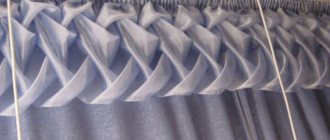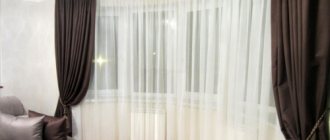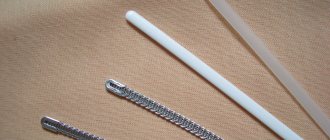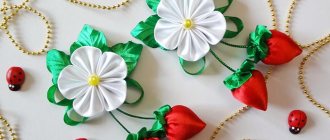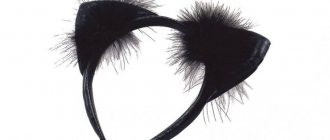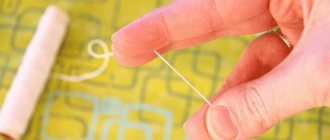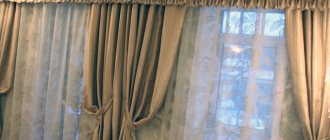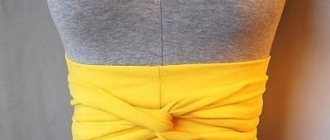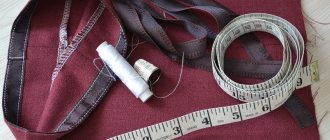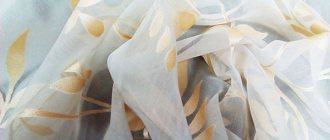The interior of an apartment is a complete organism in which every element plays an important role. The window, the appearance is not in the last place here; the decor includes fabric and various variations. Beautiful curtains, unlike blinds, add a cozy atmosphere to the room and make the apartment warm.
Beautiful curtains in the interior
It is better to decorate windows with classic decor, using curtains with drapery - then they will be lush and recognizable. Bow folds on curtains can be made in different styles and types. Just always take into account that the presence of tape implies the possibility of the curtain tearing under strong tension, because at the seam the fabric becomes somewhat thinner.
When they want to make a curtain themselves, the first thing they do is buy even scraps of fabric. This does not mean at all that you can’t make beautiful folds on the curtains yourself. This is not such a difficult task that you should outsource the work to a professional and pay a lot of money for it. The advantage of working independently is that you can always correct the points you don’t like, try them on the window and see what the result is. Today we will figure out how to make folds on curtains ourselves, what is required for this, and so on.
Types of folds
There are not many drapery options; you can create 3 types manually:
- one-sided: when they are performed, the fabric is distributed in the form of even flounces;
- bow: are a type of one-sided, located in different directions;
- counter: they have folds of fabric directed towards each other.
When decorating an interior, different types of folds are often used on curtains at the same time. Blinds and curtains compete with dense fabrics.
Radiation
To create this type of fold, you need a braid. The design of the curtains in this case requires the presence of a lining, or you will have to choose a heavy fabric to sew them. Its size with this method of assembling folds is large. The material required is 2 times the width of the finished curtain.
Glasses
This type of fold is created by gathering the fabric from the bottom and inserting filling at the top to create a structure that is shaped like a glass. It is recommended to make such tucks on plain fabrics that can be draped. When creating side folds, the fixation is first done manually and only then sewn on a machine.
Cylindrical
This type of curtain design is considered universal, because... suitable for any type of fabric. When purchasing material, you need to take into account that the canvas should be 2.5 times wider than the length of the cornice. The size of the braid is matched to the material itself.
Buffs
Puffs have different designs, which depend on the imagination of the tailor. Most often, many grips are made on the material, combined into groups.
Tubes
This type of drapery is created by using a long braid and creating a more rounded fold shape.
French
This type of fold is also called French drapery; it is created by using a special cord that is pulled through inserts.
Fan
Fan ones are similar to counter ones, with the difference that in this case there is an additional detail - the bottom. A similar drapery is performed on the wrong side of the curtains, and when purchasing material, you should take into account the cost of allowances for the fold. The width of such allowances is equal to half the depth of the fold size.
Chicken feet
This drapery has an original appearance - it has a main lower point, from which a whole group of folds diverges.
Unilateral
Calculating the amount of fabric needed to create one-sided tucks is the simplest. In this case, the length of the cornice, the coefficient and the size of the allowances for the side seams are taken into account.
Bow
They can most often be found when decorating curtains. It is not difficult to perform such drapery.
An important point in their manufacture is the accurate calculation of folds, which can be located across the entire width of the curtains or alternate with even sections of material.
The minimum bending value when performing them is only 2 cm, the maximum is 16 cm.
There are several ways to create folds, and they differ in the ratio:
- 1:3. In this case, there are completely no gaps between the edges of the bow folds. It turns out that they are in contact with each other. The consumption of material is quite large; it will be required 3 times more than the width of the window opening.
- 1:2.5. In this case, there is a gap between the edges of the bow folds, but it is less than the length of the fold itself. The fabric consumption in this case is slightly less than in the first case, only 2.5 times the width of the cornice.
- 1:2. With this ratio, the distance between the edges of the bow fold is equal to the fold itself. In this case, the canvas required is 2 times the size of the window opening.
Counter
This type of drapery is obtained by folding the fabric on both sides.
How to calculate the amount of fabric
There are several options for sewing curtains with bow elements. But in order for pleated curtains to look beautiful and match the interior, you need to know how to calculate for different types of bow folds. Before sewing such curtains, it is necessary to correctly determine the width of the cut.
Main article: How to correctly calculate how much fabric you need for curtains? (6 photos)
Bow fold pattern
You can find out how much material is needed using simple calculations. To determine the footage, you need to consider the following parameters:
- The width of the bow on the front side;
- Width between centers of folds;
- The distance between adjacent elements. The border of which is determined by the edges of the folds. The parameters are selected at will and depend entirely on the total width of the draped fabric.
For each type of folded curtains, calculations are performed individually. Therefore, it is worth considering all the options separately, which will allow you to make the right choice in the future.
Regardless of the type of folds used, the curtains should look neat and fit harmoniously into the interior of the room.
Methods for folding folds
Before calculating the amount of fabric needed to sew curtains, you need:
- Take an accurate measurement of the length of the cornice.
- Determine how the side edges will be processed.
- Calculate the depth of the folds taking into account the type of fabric chosen.
Manually
The fabric of the future curtain can be draped manually. In this case, it is necessary to carefully calculate the fabric consumption and the required tape footage for forming tucks.
There are difficulties with this sewing method. All the ropes have to be pulled by hand. In this case, they wear out much faster. If they tear, the entire drapery will have to be restored at once.
Using tape attached to the top of the fabric
Most often, simple folds are created using braid. In this case, it is necessary to take into account the allowance for the tape. More complex designs may require 3 to 4 rows of tape.
The most convenient options for tapes are adhesive ones.
They do not require sewing, but are connected to the fabric when ironed.
Manual laying option
Hand-folded tulle requires certain sewing skills, since it mainly consists of thin fabrics that are very slippery and capricious to work with.
The fabric slips and moves in different directions, therefore, if possible, such work should be given to a specialist, and if you still decide to try your hand at the work, follow a few rules.
All sewing lines should follow in the same direction, this will help you avoid skewing the fabric.
Tulle can be folded with different fillings of the fabric. The basis for the calculation is the distance along the cornice. For example, let’s take the distance along the cornice equal to three meters.
Ideally, there should be three times more fabric to place tulle on the fold, that is, 9 meters.
The principle of laying can be seen here.
But it’s not always possible to purchase 9 meters. Sometimes you already have fabric with a spacing of less than 1:3, for example 6 meters.
Double filling of tulle involves the arrangement of folds, in which the fold goes through a certain distance, it looks like: fold, distance, fold, distance.
Such tulle folds already need to be calculated.
Application in the interior of premises
Curtains with drapery of various types are used to decorate a variety of rooms. The choice of fold type depends on the type of fabric chosen and its density.
Kitchen
In the kitchen it is common to use less dense curtains. Preference is given to thin, easily draped fabrics.
Living room
Living rooms are a special category of premises. In such places it is customary to place curtains with lambrequins. It is popular to use different types of tucks to decorate the same fabric, with tassels and fringes as additional decoration.
Bedroom
In this case, dense materials are used that can create the necessary twilight in the room to ensure a restful sleep. When decorating a room, curtains should be in harmony with the surrounding interior.
Children's
To decorate children's rooms, window curtains with bright patterns are often chosen. When draping such fabrics, the location of the pattern should be taken into account. You cannot choose massive, heavy types of folds.
Basic types of curtains
There are many ways to sew beautiful curtains. For beginning needlewomen, it is better to start mastering simple designs. Nowadays, there is a huge selection of different curtains for windows, although all the variety is based on several main types.
The pictures below show a huge variety of window design options; choose the right model for yourself and determine what main type the curtain is.
Many styles are similar to each other and differ in small nuances. If you master sewing a basic model, then all varieties and modifications of this type will become available to you.
Classic
Suitable for any interior. Curtains are represented by a combination of two types of fabrics: a transparent base that covers the window and a dense sliding fabric. The presence of a lambrequin and not very complex designs are allowed.
French curtains
Usually they are a lush composition with drapery, tiebacks or lambrequins. This type also combines fabrics that differ in color and texture, for example, light translucent and denser.
Roman
This is a design made of rectangular horizontal fabric strips with a lifting mechanism. Easy to lower and raise thanks to a special device. When folded, even folds are formed.
Japanese
They are presented as straight, even sheets stretched over a frame. The curtain moves along the slats along the window.
Austrian
The fabric is gathered in wavy horizontal folds in the form of scallops. These curtains are sewn quite simply and look very original.
Examples and photos of tulle design
The original folded tulle in the photo from the Internet looks luxurious - such a voluminous product is suitable for Baroque, Empire, and classical interiors. The curtain for the bedroom is made more textured than for the kitchen.
The upper part of the canvas is treated with braid, which will create a beautiful drapery.
A combination of two or three colors, smooth and textured fabrics at the same time is very popular. The children's room is decorated with non-staining fabrics, decorated with bright prints with images of favorite cartoon characters and fairy tales.
For a child's room, it is worth purchasing curtain fabric in bright, but not overly variegated tones.
The ideal option is a plain curtain, decorated with a delicate pattern.
How to sew curtain tape to tulle diagonally: show in the instructions
Curtain tape sewn diagonally to the tulle.
Today's design delights are full of unexpected and unusual solutions. Curtains or tulle hanging diagonally are no exception. If you have a design idea in which the tulle will hang on a baguette in an unusual way, then you need to approach this idea accordingly.
Having decided on the size and number of folds, you need to choose a curtain tape. For light tulle, a thin transparent braid is perfect. It’s easy to calculate the required amount of curtain tape:
- In the usual case, the length of the ribbon is equal to the length of the tulle.
- In our version, the number of meters of tape will be equal to the length of the tulle folded diagonally.
Curtain tape sewn to the tulle diagonally
. All other steps are the same as when the tape is sewn along the top edge. We show in detail in the instructions how to sew curtain tape to tulle diagonally:
- First, bends are made on all sides.
- Each fold is ironed and stitched using a sewing machine.
- When all four sides are ready, the tulle is folded diagonally, in the shape in which it will hang on the curtain rod.
- The tulle must be ironed at the fold location.
- Secure the fold with pins or make a mark along the entire length.
- Then apply the tape, stepping back a few millimeters from the edge.
- Secure the curtain tape to the tulle with pins.
- Sew the tape along the entire length of the tulle, from the top and bottom edges. Make sure that the stitching does not cross the ribbon cord.
- While sewing, keep the ribbon, like tulle, taut.
When the ribbon is already sewn, tighten it with cords, thereby forming folds. Next, hang the tulle on the cornice.
How to curtain a window with tulle and how many meters are needed for a 3 meter window
Correctly chosen textiles help create a complete image of a room and completely change its appearance. If you curtain the windows with tulle, you can visually expand a small room, hide defects in window sills and slopes, and create additional transitions from light to shadow. The fabric is universal, practical (washing it does not cause problems, it does not wrinkle), therefore it is often used by designers when decorating houses and apartments, regardless of style.
Briefly about DIY sewing for the kitchen and other rooms
The new tulle drapery looks great in any room. Sewing tulle will not be difficult if you have at least minimal sewing skills, and in some cases, a suitable pattern.
Many people are not familiar with the technique of sewing tulle, although even a person ignorant of sewing curtains can complete the simplest model.
If you have beautiful fabric, then it is quite possible to master sewing tulle with your own hands.
First you need to decide on the fabric - transparent, translucent, dense, it can be:
The color of the material must be selected so that the finished item fits well into the existing design of the room. In addition to textiles, you will need curtain tape, loops or eyelets of a diameter suitable for the cornice, and threads to match the fabric.
The curtain model for sewing should be chosen strictly in accordance with the style direction of the room.
Focusing on the characteristics of the current interior design, you should clearly decide on the color of the tulle.
Main stages of the process
In general, the entire process can be divided into three main stages:
- preparation of material - tulle and necessary tools;
- sewing curtain tape directly;
- tie of sewn braid.
It is the curtains that make the room more comfortable and family-friendly; recently it has become quite popular to make various folds and lambrequins on the windows, the basis for which is the technology of tying the material on the braid.
In order to hang a beautiful and high-quality curtain in a room, it is best to use a special tape, which has important advantages:
- The sewing process is greatly simplified.
- The drape and folds will look even.
- A special tape will allow you to hang a beautiful finish for the window opening.
- The need to make special curtain loops for fastening to the cornice is completely eliminated.
- The tape allows you to easily and simply adjust the length of the finished product.
Tulle ribbon.
Tulle gathering coefficient for curtain tape: what does it mean?
This term denotes a ratio equal to the fabric to that already collected using a ribbon. It depends on the complexity of the pattern and there are such assembly coefficients:
- 1,5
- 2
- 2,5
- 3
For example, if you buy a strip with a coefficient of 2 , then from tulle 4 m wide, you will get exactly 4 meters of a beautifully draped transparent curtain. This indicator can be found on the packaging for the accessories.
Worth knowing: The assembly factor is also taken into account when purchasing the ribbon itself. After all, it is attached to a flat fabric and pulled together only before it needs to be hung.
To find out the required length, multiply the width of the cornice by the gathering factor +6 cm at the edges.

